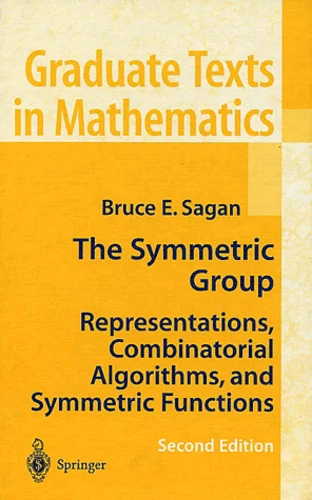The Symmetric Group. Representations, Combinatorial Algorithms, and Symmetric Functions, 2nd edition
Par :Formats :
- Paiement en ligne :
- Livraison à domicile ou en point Mondial Relay estimée à partir du 4 décembreCet article sera commandé chez un fournisseur et vous sera envoyé 10 jours après la date de votre commande.
- Retrait Click and Collect en magasin gratuit
- Livraison à domicile ou en point Mondial Relay estimée à partir du 4 décembre
- Réservation en ligne avec paiement en magasin :
- Indisponible pour réserver et payer en magasin
- Nombre de pages238
- PrésentationRelié
- Poids0.49 kg
- Dimensions16,0 cm × 24,2 cm × 1,7 cm
- ISBN0-387-95067-2
- EAN9780387950679
- Date de parution14/05/2001
- CollectionUndergraduate texts in maths
- ÉditeurSpringer
Résumé
This text is an introduction to the representation theory of the symmetric group from three different points of view: via general representation theory, via combinatorial algorithms, and via symmetric functions. It is the only book to deal with all three aspects of this subject at once. The style of presentation is relaxed yet rigorous, and the prerequisites have been kept to a minimum: undergraduate courses in linear algebra and group theory will suffice. And this is a very active area of current research, so the text will appeal to graduate students and mathematicians in other specialties interested in finding out about this field. On the other hand, a number of the combinatorial results presented have never appeared in book form before, and so the volume will serve as a good reference for researchers already working in this area. Among these results are Haimans theory of dual equivalence and the beautiful Novelli-Pak-Stoyanovskii proof of the hook formula (the latter being new to the second edition). In addition, there is a new chapter on applications of materials from the first edition.
This text is an introduction to the representation theory of the symmetric group from three different points of view: via general representation theory, via combinatorial algorithms, and via symmetric functions. It is the only book to deal with all three aspects of this subject at once. The style of presentation is relaxed yet rigorous, and the prerequisites have been kept to a minimum: undergraduate courses in linear algebra and group theory will suffice. And this is a very active area of current research, so the text will appeal to graduate students and mathematicians in other specialties interested in finding out about this field. On the other hand, a number of the combinatorial results presented have never appeared in book form before, and so the volume will serve as a good reference for researchers already working in this area. Among these results are Haimans theory of dual equivalence and the beautiful Novelli-Pak-Stoyanovskii proof of the hook formula (the latter being new to the second edition). In addition, there is a new chapter on applications of materials from the first edition.

